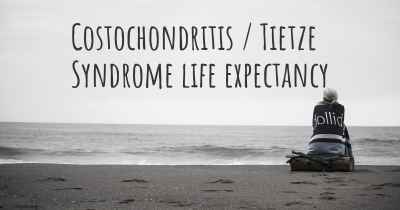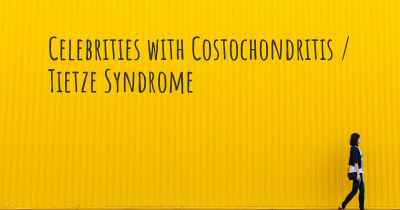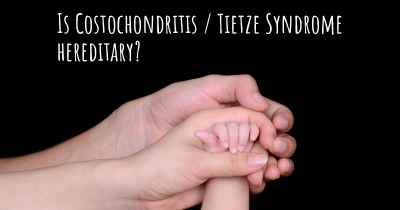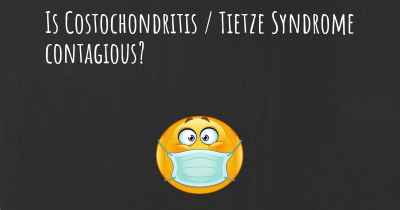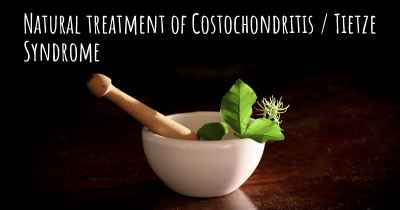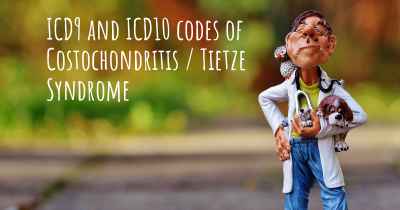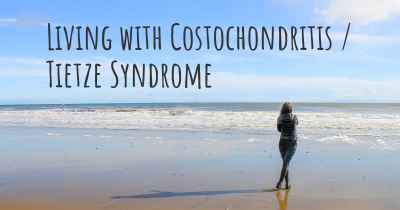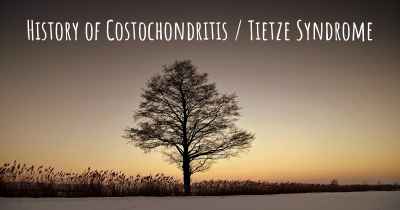Costochondritis / Tietze Syndrome diet. Is there a diet which improves the quality of life of people with Costochondritis / Tietze Syndrome?
Are you aware of a diet that can improve the quality of life of people with Costochondritis / Tietze Syndrome? Is there a diet that is suggested to avoid when having Costochondritis / Tietze Syndrome? See if there is a diet that can improve the quality of life of people with Costochondritis / Tietze Syndrome, recommended and to avoid food when having Costochondritis / Tietze Syndrome
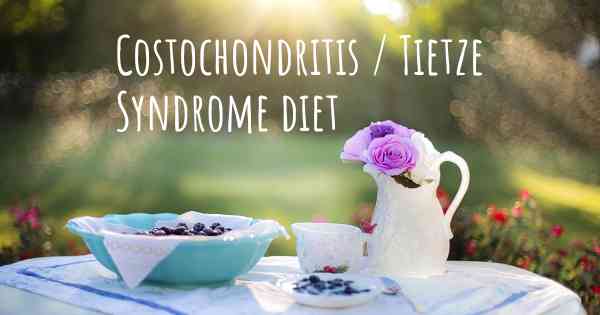
Costochondritis / Tietze Syndrome Diet: Improving Quality of Life
Costochondritis, also known as Tietze Syndrome, is a condition characterized by inflammation of the cartilage that connects the ribs to the breastbone. It can cause chest pain and discomfort, making it challenging for individuals to carry out their daily activities. While there is no specific diet that can cure or eliminate Costochondritis/Tietze Syndrome, certain dietary changes may help improve the quality of life for those affected.
1. Anti-Inflammatory Foods
Since Costochondritis/Tietze Syndrome involves inflammation, incorporating anti-inflammatory foods into your diet may be beneficial. These foods can help reduce inflammation and alleviate symptoms. Include the following in your diet:
- Fatty Fish: Rich in omega-3 fatty acids, fish like salmon, mackerel, and sardines have anti-inflammatory properties.
- Leafy Greens: Spinach, kale, and other leafy greens are packed with antioxidants and can help combat inflammation.
- Berries: Blueberries, strawberries, and raspberries are high in antioxidants and can help reduce inflammation.
- Turmeric: This spice contains curcumin, a compound known for its anti-inflammatory effects. Consider adding turmeric to your meals or consuming it as a supplement.
- Ginger: Ginger has been used for centuries to reduce inflammation. Incorporate it into your diet by adding it to teas, smoothies, or meals.
2. Avoid Trigger Foods
While there is no definitive list of trigger foods for Costochondritis/Tietze Syndrome, some individuals may find that certain foods worsen their symptoms. It is essential to identify these trigger foods and avoid them. Common trigger foods include:
- Processed Foods: Foods high in processed sugars, unhealthy fats, and additives can contribute to inflammation and worsen symptoms.
- Spicy Foods: Spices like chili powder, cayenne pepper, and hot sauces may trigger inflammation and exacerbate chest pain.
- Acidic Foods: Citrus fruits, tomatoes, and vinegar-based products can potentially aggravate symptoms in some individuals.
- Caffeine and Alcohol: These substances can increase inflammation and may worsen symptoms for some people. It is advisable to limit or avoid their consumption.
3. Balanced Diet
Adopting a balanced diet is crucial for overall health and well-being, including managing Costochondritis/Tietze Syndrome. Ensure your diet includes:
- Whole Grains: Opt for whole grains like brown rice, quinoa, and whole wheat bread, which provide essential nutrients and fiber.
- Lean Proteins: Incorporate lean protein sources such as chicken, turkey, fish, tofu, and legumes into your meals.
- Fruits and Vegetables: Aim to consume a variety of colorful fruits and vegetables to obtain essential vitamins, minerals, and antioxidants.
- Healthy Fats: Include sources of healthy fats like avocados, nuts, seeds, and olive oil in your diet.
- Hydration: Drink an adequate amount of water throughout the day to keep your body hydrated and support overall health.
4. Mindful Eating
Practicing mindful eating techniques can help individuals with Costochondritis/Tietze Syndrome manage their symptoms. Consider the following:
- Eat Slowly: Take your time to chew your food thoroughly and savor each bite. Eating slowly can reduce the strain on your chest and minimize discomfort.
- Smaller, Frequent Meals: Instead of consuming large meals, opt for smaller, more frequent meals throughout the day. This can help prevent overeating and reduce pressure on the chest area.
- Identify Food Triggers: Keep a food diary to track your symptoms and identify any specific foods that may worsen your condition. This can help you make informed decisions about your diet.
- Stress Management: Stress can exacerbate symptoms of Costochondritis/Tietze Syndrome. Engage in stress-reducing activities such as meditation, deep breathing exercises, or yoga to promote overall well-being.
While dietary changes can potentially improve the quality of life for individuals with Costochondritis/Tietze Syndrome, it is essential to consult with a healthcare professional or a registered dietitian before making any significant changes to your diet. They can provide personalized guidance based on your specific needs and medical history.
Posted Jul 27, 2017 by Johanna 1550
